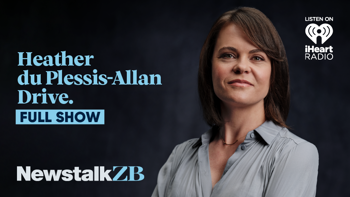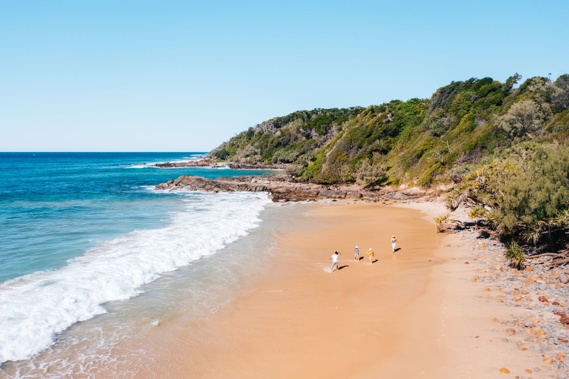
The Sunshine Coast’s compact layout belies its bounty, richly necklaced with nature-based experiences in easy reach of each other. I hop-scotched about the place like a frisky roo, lapping up its elemental riches. The welcome mat is being thickly laid-out, with Air New Zealand direct services from Auckland to the Sunny Coast underway, and with Jetstar flying the route from later this year. You’ve got 100 kilometres of glittering beaches at your disposal- no matter what shade of sand takes your fancy; world-class wildlife experiences; plus an enchanting hive of hinterland gems, from fabulous forest walks to characterful villages. But don’t just throw your togs in the suitcase when heading to the Sunny Coast because there’s some seriously scenic mountain trails worth packing your hiking boots for, too.
Under a cerulean blue sky at dawn, I was out of bed early to schmooze with some of the Sunshine Coast’s rock stars – the eleven thrusting vertical rocky columns of the Glasshouse Mountains. These magnificent volcanic outcrops crown the landscape like towering sentinels, looming large on the skyline from the southern entrance to the Sunshine Coast and also while strolling Caloundra’s coastal path. The highest is Mount Beerwah at 556 metres above sea level, but the most identifiable is Mount Tibrogargan which from certain angles bears a resemblance to a face staring east towards the ocean.
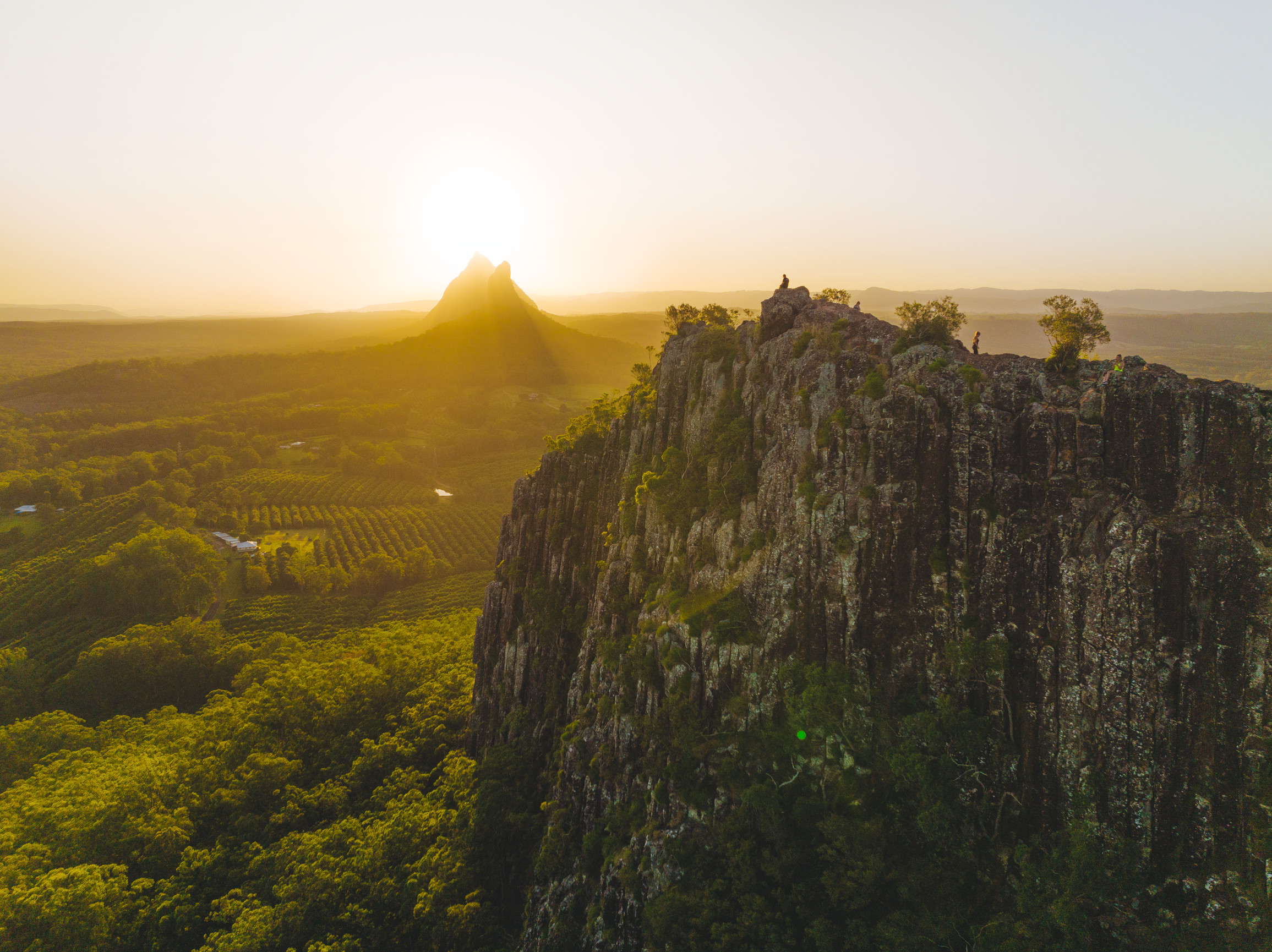 Mt Ngungun and the Glasshouse Mountains. Photo / Tourism Queensland
Mt Ngungun and the Glasshouse Mountains. Photo / Tourism Queensland
Their bewitching shapes have a transfixing quality and are steeped in sacred ancient history for the Jinibara people. They clearly captivated the imagination of one passing James Cook, who was struck by “the singular form of their elevation,” which he found reminiscent of the glassmaking kilns of his native Yorkshire - and named them as such. For the Jinibara people, these craggy rocky peaks belong to a family of mountain spirits.
To commune up-close with these wondrous formations, head down Steven Irwin Way and follow the signs to the Glasshouse Mountains National Park, where are variety of short walking trails amplify their strutting grandeur. I knocked off the Mount Ngungun hike, a 60 minute return trail on a well graded track, with a few short, steep sections. After traversing open forest, the summit unfurls a sweeping and intimate view of some of Ngungun’s siblings, including Mt Tibrogargan, Mt Connowrin and Mt Beerwah. Communing with these rocky incisors in the morning calm is a spell-binding way to kickstart your day.
Further up the line, north of Mooloolaba, Mount Coolum is an awe-inspiring volcanic dome that imposingly rears up from the coastline. Yes, Kiwis may well snigger that this “mountain” tops out at an altitude of just 208 metres, but summiting this 25-million-year-old laccolith spectacularly bestows you with one of the most irresistible panoramic vistas on the Sunshine Coast. Set aside 90 minutes for the return walk. The first section of the trail is a nice shaded stroll through native bushland and forest.
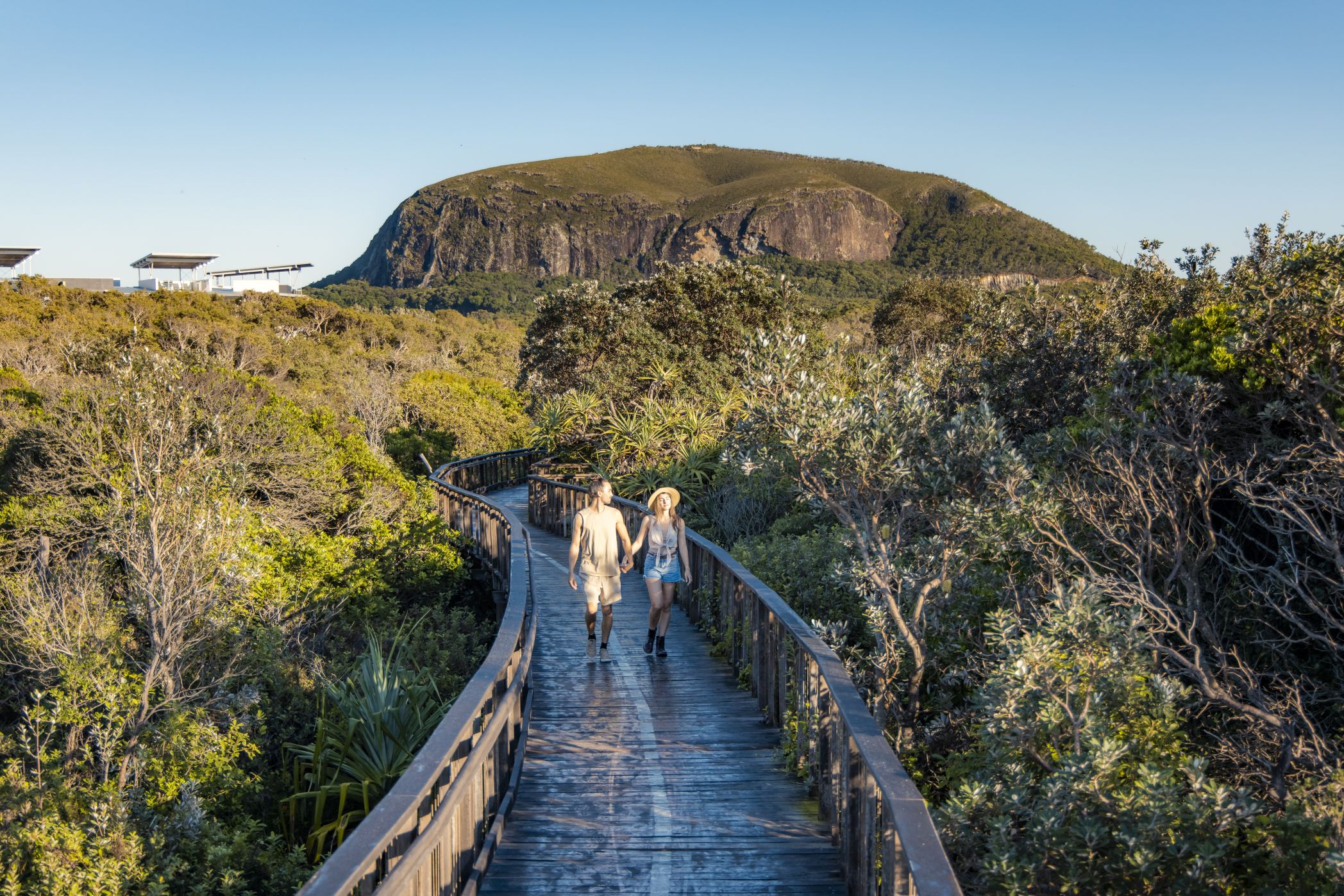 Mount Coolum boardwalk. Photo / Visit Sunshine Coast
Mount Coolum boardwalk. Photo / Visit Sunshine Coast
The path then becomes quite steep as it traverses the rock face and the thigh-burning starts to kick in! Give yourself a breather and snap away at the celestial coastal views, the rolling hills and hinterland, all the way to the top. Down below, another great little jaunt is the Mount Coolum Boardwalk, backdropped by the dome, wending its way through lush native bushland towards the ocean. Soak up the beachfront beauty of Coolum by promenading the bays, namely, First Bay, Second Bay and Third Bay! It’s a perennial magnet for water lovers, with its long stretch of golden sand and rolling surf.
It’s easy to see why Mooloolaba Beach consistently ranks as one of Australia’s best beaches. Through a fortuitous quirk of nature, it’s one of the few East Coast beaches that actually faces north, amplifying its appeal with calm, warm ocean water, all-year round. They’re certainly a fit, active lot in Mooloolaba. The sun had barely risen from its slumber, but stepping out on the coastal pathway, it looked like half of the population was up and at it, surfing in the crystal-tipped waves, dabbling on the shoreline, milling about the surf club fuelling up on espressos, and stepping out on the verdant coastal pathway. Mooloolaba embraces its beachy lifestyle with zest, around the clock. I was fascinated to learn about Bunya Pine trees, that gracefully shade the beachfront. Their pleasingly symmetrical dome shape is striking and Bunyas are emblematic of the region, previously logged to the point of oblivion given their prized status as a highly valued timber. Today they only grow in a few pockets of Queensland, including the Bunya Mountains, to the west of Mooloolaba.
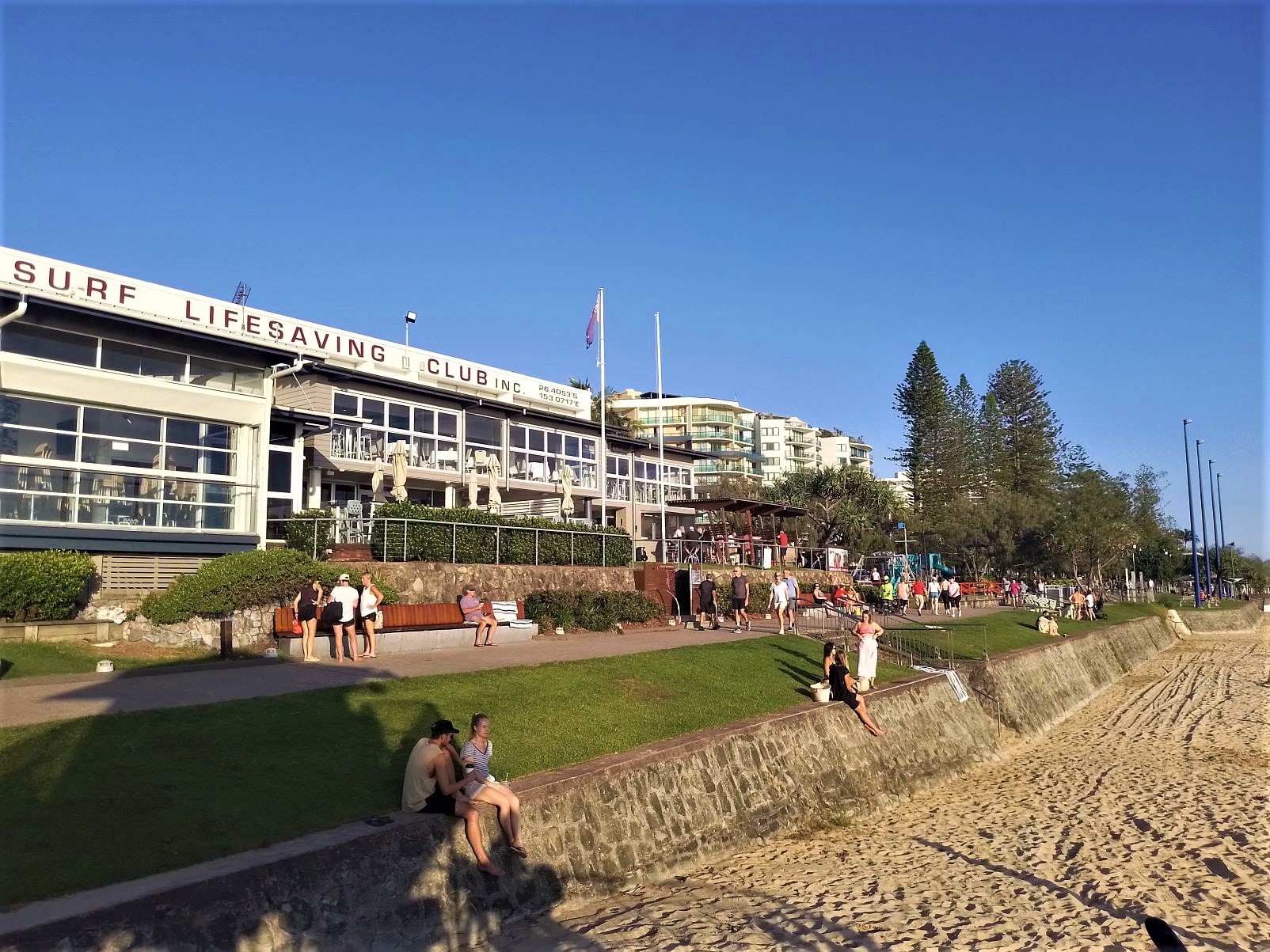 Mooloolaba life at 6:30am. Photo / Mike Yardley
Mooloolaba life at 6:30am. Photo / Mike Yardley
Mooloolaba’s culinary script has being exuberantly rewritten at The Wharf, which underwent a tip to toe facelift three years ago. One of the heroes to join the parade is Spero, the brainchild of Sunshine Coast restaurateur Tony Kelly, the powerhouse behind many highly decorated eateries restaurants over the years. Unmistakably Greek, Spero feels like it’s been scooped up direct from the Aegean, with a salivating menu of calamari, lamb moussaka, gyros, pork belly baklava and spanakopita.
Also in Tony Kelly’s stable at The Wharf, the fiendishly popular Rice Boi. Projecting the essence of a Japanese izakaya dive bar, Rice Boi is a lusty celebration of Asian street-style food. Bao fans go ga-ga over their duck, pork and chicken sumo loaded buns, alongside their delicious dumplings and incredible curries.
As a working wharf and one of the biggest fishery ports on the eastern seaboard of Australia, trawler-to-table dining doesn't get any closer than this! Another dining icon to add to your bingo card at The Wharf is Prawn Star. The dining landmark was first established in Cairns, but Prawn Star has branched out to Mooloolaba two years ago, with two restored fishing trawlers permanently moored at The Wharf, serving wild-caught, sustainably-sourced seafood, cooked onboard. Tuck into a platter of Mooloolaba Prawns, a mix of the King Prawns and Tiger Prawns, accompanied with a secret sauce.
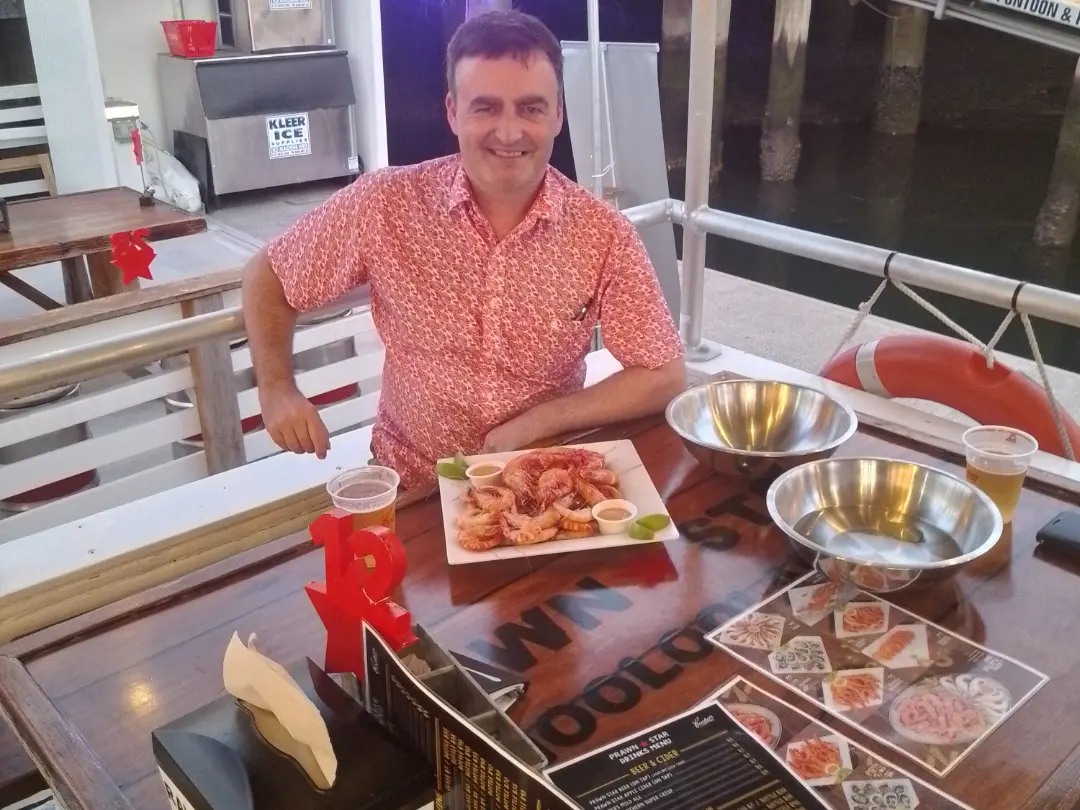 Mike at Prawn Star Mooloolaba. Photo / Mike Yardley
Mike at Prawn Star Mooloolaba. Photo / Mike Yardley
From The Wharf, I spent a most idyllic afternoon soaking up the sun and the wondrous wildlife with Sunreef Mooloolaba. I boarded Whale One for a four hour cruise, savouring the might and awe of migrating humpback whales. The gleaming ocean blue was mirror smooth as we tracked down some gentle giants at play. During the winter months, the waters off Mooloolaba form part of Australia’s Humpback Highway, typically playing host to 40,000 humpbacks cruising up from Antarctica to breed and give birth. First, they swim north to their breeding grounds in northern Queensland and then return in September and October, often accompanied by their calves. Sunreef’s expert guides pointed out that the population seems to be increasing about 10% annually.
Over the course of several hours, we savoured a dozen humpbacks at play, blowing and breaching in flamboyant fashion. It was noted that the juveniles were particularly exuberant. Apparently, a humpback can hold its breath for 45 minutes, but they typically resurface every 15 mins. The most remarkable fact I gleaned from the guides is that satellite tracking has observed that the humpbacks’ migratory path is incredibly consistent, sticking to the same north-south track within 1degree, year on year, on their 10,000km return swim. That’s pretty impressive navigation! Spending an afternoon admiring these gentle giants, under the sparkling sun, is a guaranteed holiday highlight. If you want to take your experience further, Sunreef pioneered Swim with Whales tours in Australia.
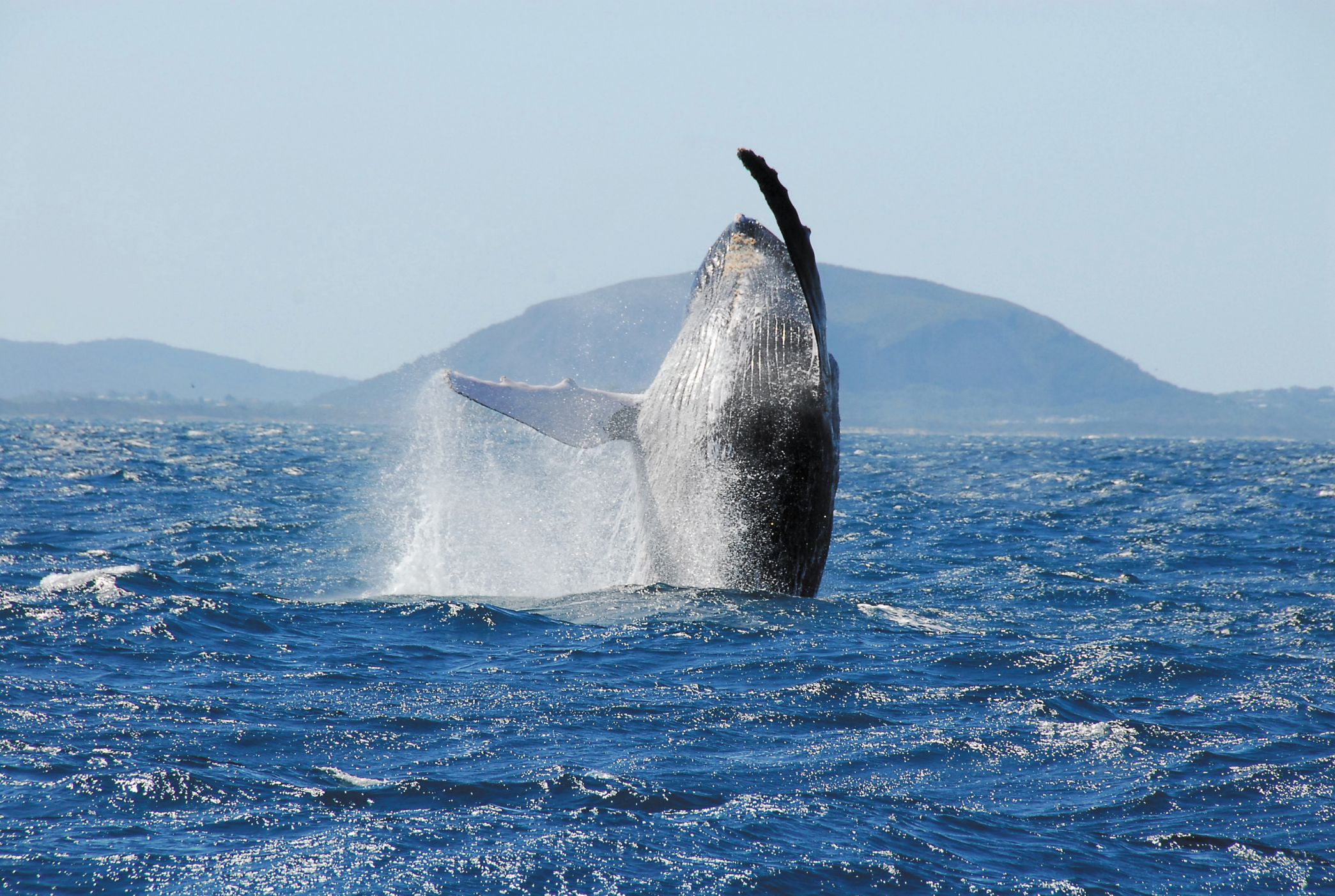 Whale watching in Mooloolaba. Photo / Visit Sunshine Coast
Whale watching in Mooloolaba. Photo / Visit Sunshine Coast
It may be somewhat under-rated by Kiwis as a holiday hot-spot, but the Sunshine Coast’s southern belle, Caloundra is an eye-catching town and aquatic wonderland. The abundance of beaches and bays fringing the town and headland is astonishing, all with their own personalities and quirks, including Moffat, Dicky, Bulcock and Shelly. Golden Beach is the most southerly of Caloundra’s beaches. It’s a serene east-facing beach on the Pumicestone Passage, a sparkling body of water that separates the mainland from the tip of Bribie Island. Grab a kayak from Bill’s Boat Hire and enjoy a tranquil paddle. The passage is a popular spot among twitchers, because the sandbanks play host to a vast menagerie of waders and terns. You’ll regularly see pelicans here too – the bird with the longest beak in the world.
But the crowning jewel is Kings Beach, which has been a family favourite for Queenslanders since the 1880s. So close to the centre of town, there’s some great history here, like the gorgeous old Spanish Mission-style beach pavilion that was built as changing rooms nearly 90 years ago. Just before the long strip of sand meets the headland, you’ll find the magnificent Kings Beach Ocean Pools – a soothing alternative for a dip if you prefer not to swim in the sea. Best of all, they’re free for public use. The maximum depth is 1.5 metres and the usual rules for pool safety and the enjoyment While the pools are open for use all year-round they are only patrolled by lifeguards in the summer months.
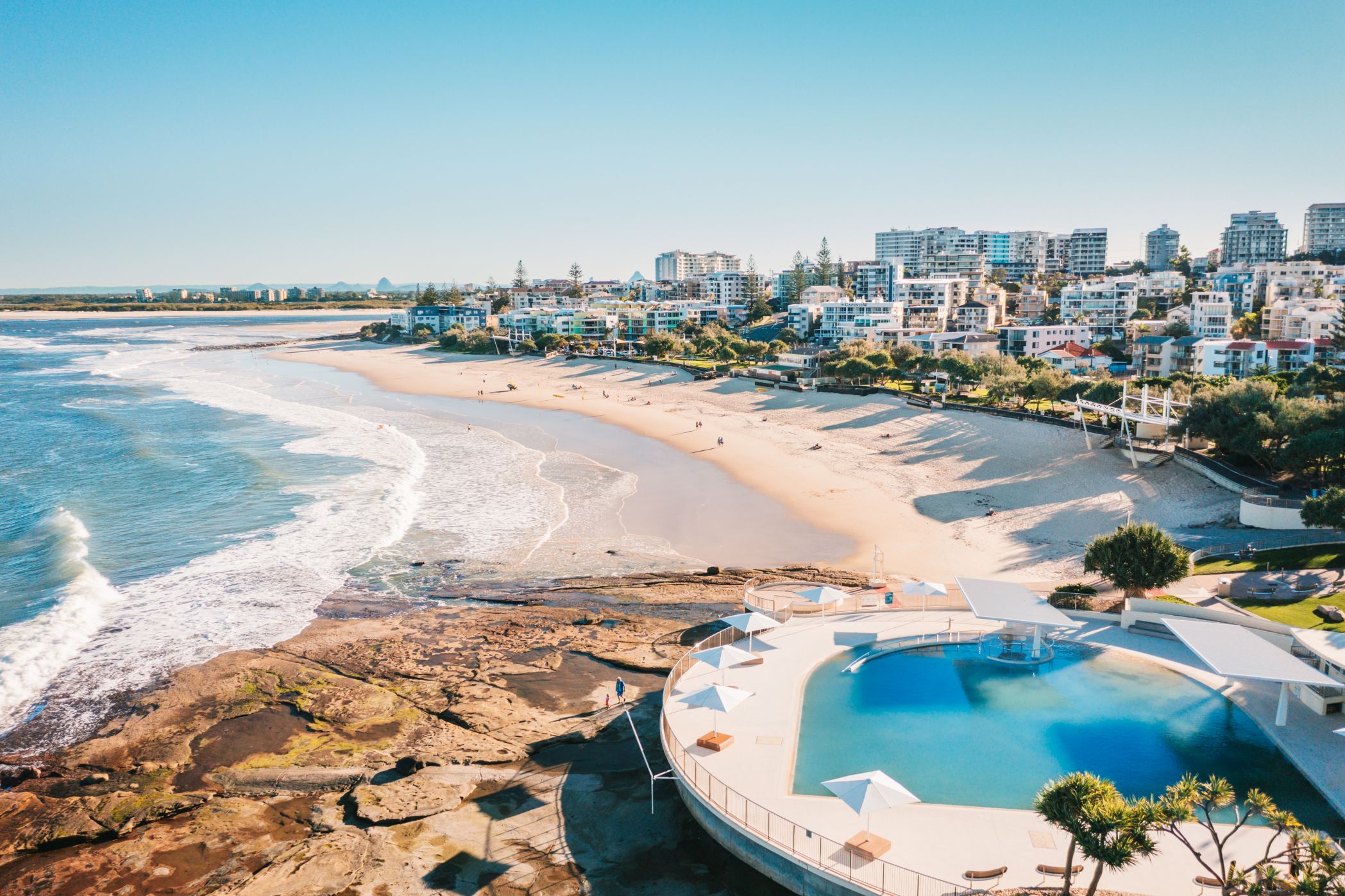 Caloundra and Kings Beach. Photo / Visit Sunshine Coast
Caloundra and Kings Beach. Photo / Visit Sunshine Coast
After enjoying a restorative dip, promenade you way around a chunk of Caloundra’s famed coastal pathway, that caresses the ravishing waterfront for a whopping 25km, starting at Golden Beach and washing you up in Mooloolaba. (The wider Sunshine Coast coastal pathway spans 73km, from Bells Beach to Coolum.) Whether you’re on-foot or by bike, the boardwalk leads you up the headland where I stopped at centaur park for sizzling views. There’s a beautiful memorial here to the AHS Centaur, an Australian hospital ship that was sunk off the coast by a Japanese submarine in 1943.
More than 250 people were killed while 64 others were plucked from the water. The ship was attacked despite bearing the full hospital ship markings of green lines and the Red Cross on its hull - a war crime under the Hague convention. No one stood trial for the attack but Lieutenant Commander Nakagawa who supposedly commanded the torpedo attack was later jailed as a war criminal for other incidents. After cruising through Shelly Beach and Moffat Beach, you'll also pass the wreck of the SS Dicky that washed ashore on Dicky Beach in 1893 during a cyclone.
Where to eat and stay? Base yourself in Caloundra. Coffee cat at Kings Beach is a cracking spot for breakfast. Don’t go past their shakshuka. For dinner, soak up a fireball sunset gilding the Pumicestone Passage at Acqua. This newcomer to the dining scene has cultivated a fast following. Their crispy skin coral sea barramundi is a knock-out. Just a few walkable blocks back from the Esplanade, Motel Caloundra has been stripped back and freshly revamped as a sustainable boutique motel. It bills itself as the Sunshine Coast’s first net-zero energy hotel, with a bank of 47 solar panels on the roof of this nine-room property. It’s an agreeable cocoon of comfort with a restrained colour palette, deluxe accommodations, organic toiletries and all the tech toys. www.motelcaloundra.com.au
Kick winter’s chill to the kerb and skip across the Tasman to the Sunshine Coast. Grab your golden fill of sunshine moments. World-beating beaches, lush hinterland villages, ancient peaks, wild encounters and succulent seafood are all part of the package. www.visitsunshinecoast.com
Mike Yardley is our resident traveller on Jack Tame Saturday Mornings.
Take your Radio, Podcasts and Music with you









